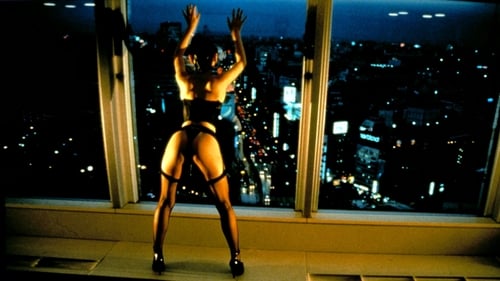Yayoi Kusama
Рождение : 1929-03-22, Nagano, Japan
История
Yayoi Kusama, is a Japanese artist and writer. She started to paint using polka dots and nets as motifs at around age ten ,and created fantastic paintings in watercolors, pastels and oils. Yayoi travelled to the United States in 1957. Showed large paintings, soft sculptures, and environmental sculptures using mirrors and electric lights. In the latter 1960s, she staged many happenings such as body painting festivals, fashion shows and anti-war demonstrations. She launched media-related activities such as film production and newspaper publication. In 1968, she produce and starred in the film "Kusama's Self-Obliteration".

Self
В центре повествования документального фильма Яеи Кусама — неординарная художница, ставшая самой продаваемой в мире. В свои 88 она живет в психиатрической лечебнице, где продолжает творить.

Japanese avant-garde artist Yayoi Kusama is best known for her inexhaustible creations involving polka dots, pumpkins, and vibrant colors. Her love of design has seen her join forces with top fashion houses.

Writer
Yayoi Kusama born March 22, 1929 is a Japanese artist and writer. Throughout her career she has worked in a wide variety of media, including painting, collage, scat sculpture, performance art, and environmental installations, most of which exhibit her thematic interest in psychedelic colors, repetition and pattern. A precursor of the pop art, minimalist and feminist art movements, Kusama influenced contemporaries such as Andy Warhol, Claes Oldenburg and Yoko Ono.

Yayoi Kusama born March 22, 1929 is a Japanese artist and writer. Throughout her career she has worked in a wide variety of media, including painting, collage, scat sculpture, performance art, and environmental installations, most of which exhibit her thematic interest in psychedelic colors, repetition and pattern. A precursor of the pop art, minimalist and feminist art movements, Kusama influenced contemporaries such as Andy Warhol, Claes Oldenburg and Yoko Ono.

Are bad girls casualties of patriarchy, a necessary evil, or visionary pioneers? By tracing the concept of the bad girl in Japan as a product of specific cultural assumptions and historical settings, Bad Girls of Japan maps new roads and old detours in revealing a disorderly politics of gender. The essays explore deviancy in richly diverse media. Mountain witches, murderers, performance artists, cartoonists, schoolgirls, and shoppers gone wild are all part of the terrain.

Herself
This film follows Yayoi Kusama during the preparations for Tate Modern's 2012 retrospective of her work, when she undertook the mammoth physical and mental challenge of creating 100 new works for the largest-ever exhibition of her art.

Captures the avant-garde artist Yayoi Kusamas creative process as she diligently works to complete her series of 50 large monochrome drawings. As her work comes to life, one can witness the essence of her art as it wells up in the conflict between life, death, and love.

Fortune teller
Молодая проститутка Ай по прозвищу Топаз после встречи с музыкантом-садомазохистом Сато, считавшим её «единственной надеждой нашей гнилой Японии», проходит по кругам современного ада. Она вынуждена удовлетворять потребности закомплексованных и жестоких японских бизнесменов и бандитов, с неизбывной тоской вспоминая о своём уже канувшем в небытие «учителе».

While I was staying in New York in the 1960s during the rise of the hippie movement, I filmed performances of body painting by the artist, Kusama Yayoi, together with the performers. As I wasn't satisfied with merely documenting her performance, made super-impositions of flowers over the performance, more as a film poem than a documentary, since flowers was the symbol of the hippie movement as given the name "flower children."

Writer
A film exploration of the work and aesthetic concepts of Yayoi Kusama, painter, sculptor, and environmentalist, conceived in terms of an intense emotional experience with metaphysical overtones, an extension of my ultimate interest in a total fusion of the arts in a spirit of mutual collaboration. —Jud Yalkut

Art Direction
A film exploration of the work and aesthetic concepts of Yayoi Kusama, painter, sculptor, and environmentalist, conceived in terms of an intense emotional experience with metaphysical overtones, an extension of my ultimate interest in a total fusion of the arts in a spirit of mutual collaboration. —Jud Yalkut

A film exploration of the work and aesthetic concepts of Yayoi Kusama, painter, sculptor, and environmentalist, conceived in terms of an intense emotional experience with metaphysical overtones, an extension of my ultimate interest in a total fusion of the arts in a spirit of mutual collaboration. —Jud Yalkut





